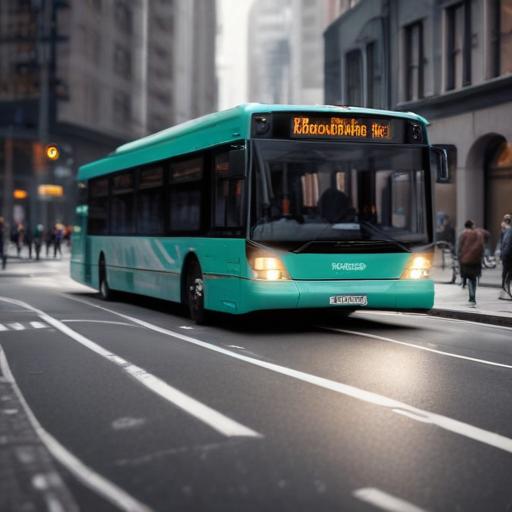The Washington D.C. transit authority, known as WMATA, is making a significant shift towards prioritizing buses over rail as part of its new transportation strategy. This decision comes as many transit agencies across the United States face leaner budgets and are forced to reconsider their modes of transportation amid changing demands. For the first time in 50 years, WMATA has redesigned its bus system with the “Better Bus Network,” aiming to provide a more reliable, frequent, and user-friendly bus service while scaling back on new rail projects.
As part of this overhaul, Metro has eliminated around 527 bus stops—approximately five percent of its total—by consolidating stops that were too close together. This step is intended to enhance overall service speed. The routes have been streamlined to serve critical areas such as schools and workplaces more effectively, and new route names and signs have been introduced to improve navigation for riders. The changes are designed to increase service frequency and overall efficiency.
Despite this progress, the new network required Metro to make difficult trade-offs. “If they wanted to establish a new route serving communities without bus service, resources had to be redistributed, potentially affecting existing routes,” explained Kai Hall, policy manager for Greater Greater Washington.
The positive changes in D.C. have sparked a regional reevaluation of transit, encouraging neighboring agencies in Maryland—specifically RideOn and TheBus—to launch their own redesigned bus systems. Montgomery County is also pushing for a bus rapid transit initiative called “Flash BRT” on the Route 355 corridor. Moreover, the Northern Virginia Transportation Authority plans a vast bus rapid transit network consisting of up to 28 new routes at a cost exceeding $880 million. Hall sees this as an opportunity to provide rapid transit at reduced costs while urging regional leaders to foster political courage in reallocating street space from cars to public transit.
Though buses are now viewed as the future of mobility, rail remains essential within the broader mass transit framework. However, ridership on Metrorail is still approximately a third lower compared to pre-pandemic levels, while bus ridership has increased. The challenges affecting rail include high costs and lengthy timelines for projects, exemplified by recent overruns seen in Maryland’s Purple Line, which is considerably delayed and over budget.
Looking forward, while the D.C. region emphasizes buses, there remains a recognition that rail service plays a crucial role. Virginia State Senator Scott Surovell argues that investments in rail should not be sacrificed for the sake of convenience. Additionally, optimizing the existing rail services, such as MARC and VRE, could lead to improved commuter capacity without needing extensive infrastructure work.
While the adjustments to the transit system are still in their early stages, and challenges persist nationwide, advocates remain optimistic about the bus-centric future for D.C. If the new strategies prove effective in enhancing connections and reducing transportation times, it may well serve as a model for other cities facing similar hurdles. This potential for positive change illuminates a forward-thinking approach to urban transportation that could lead to a more efficient and accessible public transport system for residents.
